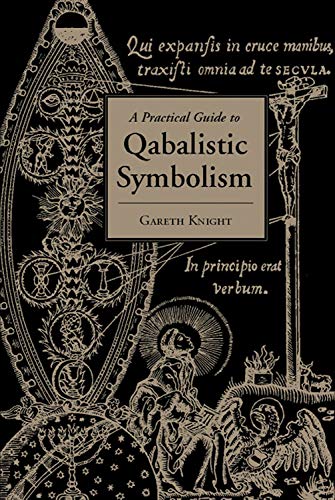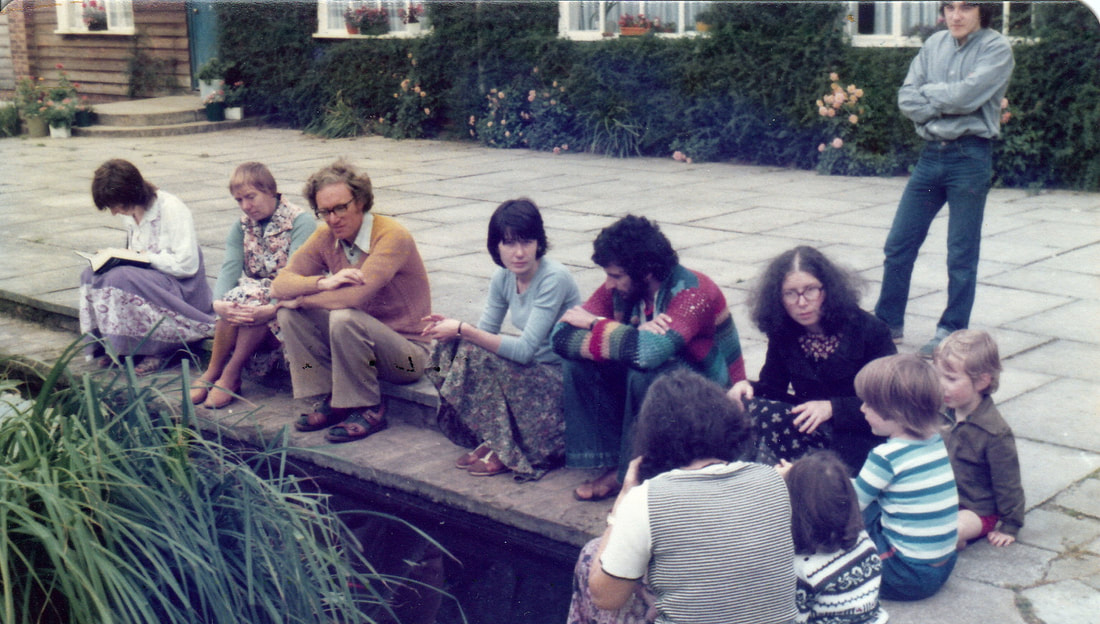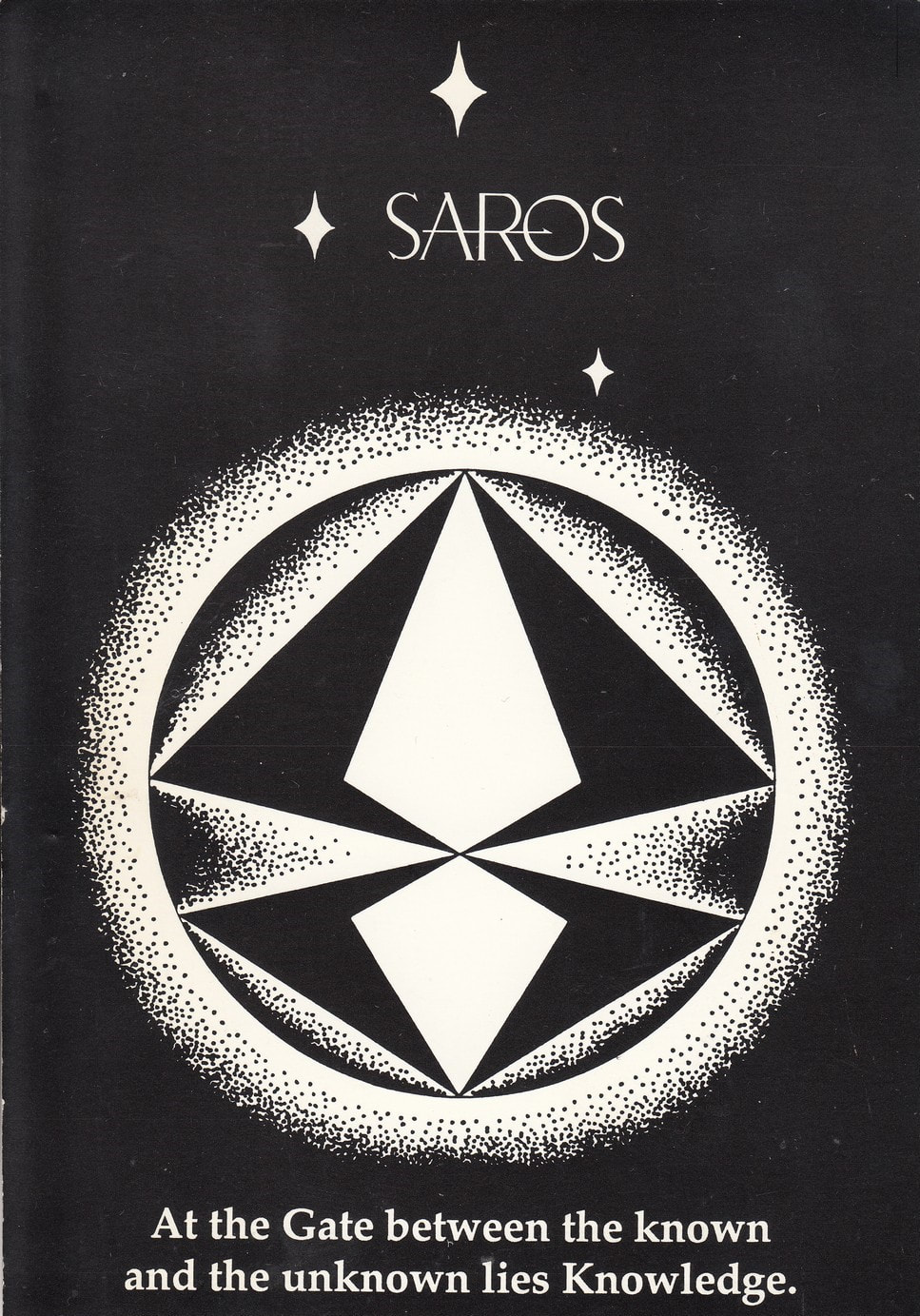Part Two of a memoir by Cherry Gilchrist In the previous blog, I wrote about how I encountered Kabbalah in 1970, and how this was part of a general opening of doors, as teaching traditions became more accessible. In this subsequent part, I describe what the work of a Kabbalah group was like in 1970, at the time that I joined. Only a few years had elapsed since the original Soho impetus gave way to separate lines of teaching, led by Glyn Davies, Alan Bain, Tony Potter, Margaret Bain and Robin Amis. In this case, the group I attended was led by Glyn Davies, and it formed a link in the chain between the first Soho Tree study groups and the organisation which came to be known as Saros. Early Work in the Group In 1970, Chris Gilchrist and I moved to London after graduating from Cambridge, where we had first encountered the Tree of Life tradition, and we took up Glyn Davies’s invitation to join his new Kabbalah group, starting that autumn. We knew very little about the earlier Soho groups at that time, although we had spent a fair amount of time with Glyn since that first meeting back in February. But as I learnt later, this new group had evolved from one which Glyn saw as a rescue mission to salvage what was left of a Kabbalah group from a few years earlier, which Alan Bain had abandoned in what seem to have been turbulent circumstances. Now, with this current initiative, Glyn was able to take a fresh step forward, in terms of his aim to evolve Kabbalistic knowledge; in between, he had run an astrology group, and some of its former members came along too when we started that September. Chris and I were, in fact, the only completely new birds on the branch. Other members were modern jazz musicians Eddie Prevost* and Lou Gare, neighbour Anne Couchman, Joy Southgate, (an old friend of Warren Kenton’s, and for a time his muse), Keith and Yvonne Barnes and of course Glyn and his wife Gila. Warren Kenton came to the first one or two meetings, then left to write his own book on Kabbalah. He had known Glyn for many years before Glyn introduced him to the Tree, not long before the start of the group, and made swift progress thereafter! Glyn is referred to as ‘my instructor’ in Warren’s memoir, The Path of a Kabbalist. (*see this film about Eddie Prevost, his life and music) We met each Monday evening in Glyn and Gila’s front room, where we perched on assorted old chairs or however we could squeeze in. A mirror hanging over the fireplace had a Tree of Life design cunningly scraped bare in the silvered glass, illuminated from behind by a light bulb. Meetings acted as a step-by-step guide to the Kabbalistic Tree of Life, in which we fully participated, working first of all week by week on each sephira in turn. At the start of the meeting, we sat together and did our individual meditation practices for twenty minutes or so. Then the discussion began. We usually prepared some homework – thinking about the relevant sephira, and perhaps writing or painting something to represent it which we could contribute to the group the following week. So for instance Yesod would represent the sphere of ‘personality’ and dreams, and we would discuss how this might be distinguished from experiences of Tiphareth, the essence of the self. In this particular instance, Glyn gave an example of shifting into the Tiphareth state of consciousness, something he had experienced when he had been working very long hours in some kind of a technical workshop (probably radar, as that was his RAF speciality). Suddenly, he told us, the tiredness dissolved to be replaced with a kind of radiant clarity, with no weariness, and the sense of being bathed in sunlight. And by observing ourselves and our interactions during the week, we too were often able to come up with examples of the sefiroth at work. Setting the intention to observe could in fact help to generate experiences, though the emphasis was on being completely truthful and not ‘editing’ these. Later, once we’d ‘climbed’ the Tree, we began ‘path working’. At that period, visualisation exercises were little known outside esoteric circles, and access to them was safeguarded, both to preserve their power, and to protect anyone with insecurities from being overwhelmed. The power of group visualisation can be intense. Nowadays, the technique has become common in all sorts of studies and disciplines – and perhaps has lost some of that intensity- but at the time we were advised only to do such exercises under certain conditions and careful leadership. The leader, who must remain alert in all subtle senses, can then balance and if necessary, steer the course the visualisation is taking. I found this a fascinating discipline to follow when I in turn began to lead visualisations. Generally, in this early group, we ‘journeyed’ on a particular path between one sefira and another. For instance, Hod to Geburah, or Yesod to Netzach. Later still, we worked on visualising ‘magical’ instruments within that context – staff, cup, sword, pentacle. This seemed to arouse powerful individual experiences of what such an instrument might mean to someone in terms of their own life’s work. After that, we did more advanced exercises with visualisation and projection of energy, but always backed up by observation, and exercises to increase awareness in everyday life. We would agree to ‘tune in’, for instance, at a particular time of the week, so that we were all ‘on line’ (in pre-internet days) at the same time. Everything was well earthed by a gathering in the kitchen at the end of the evening; each person in turn was tasked with bringing cheese and wine to enjoy while we chatted and joked until Glyn would say, ‘Haven’t you all got homes to go to?’ Glyn was available if you had individual questions, or perhaps if one of the exercises triggered an experience which felt hard to handle. It was at this time that I learned the ‘remembering backwards’ exercise from him, recalling the events of the day in reverse just before falling asleep. This also encouraged lucid dreams. Often Chris and I would drive from Camberwell to Maida Vale on another evening in the week, just to talk, to ask more questions, and to absorb more of Glyn’s stories. We also witnessed various of his projects in development, such as ‘Galgal’ as the Tree of Life Oracle was first known. This is a divination system, based on the meanings of groups of Hebrew letters on the Tree, and I assisted with the writing of the text, from its inception in 1971 until the most recent edition in 2021. Awe and Irreverance Our experience was, I believe, typical of people who came into Glyn’s orbit and desired to learn from him. He sought nothing for himself except perhaps to enjoy sharing ideas and to play his part in the transmission of knowledge. I was in awe of him, but did not worship him, and paid heed to the way he fended off any ‘guru’ status – it was forbidden, for instance, ever to give him presents! And he claimed to have a good line in farting and taking out his false teeth if he felt that someone was being too deferential in his presence. He taught us too, in turn, not to accept money for anything we might do related to the Work, and I would say that we have all been scrupulous in this respect. There are of course areas such as writing a book, or giving a lecture, where a fee is part of the deal, but for running groups and courses, not a penny is ever taken by the leader except to cover expenses. As he showed us, this also frees us to follow the path of knowledge where it leads, rather than being obliged to fulfil inappropriate expectations from others. We could joke with Glyn, and solemnity was only needed in matters of genuine seeking and understanding. However, my awe of him in the early days did extend to being rather naïve about certain things. During one of the formal Kabbalah meetings, he began waving his hands around in strange, flowing movements. I assumed that these were mystical, magical gestures, until I saw them being were repeated a few weeks later, and realised that he was wafting away the cigarette smoke from his face! The Dark Pillar In the final phase of these meetings, some eighteen months after they started, we did an exercise whereby we visualised a circle surrounding the group, and a Tree of Life in our own body, whose light we projected into the centre of the circle. It was in some way the summation of the work of this particular group. On February 21, 1972, I wrote down notes immediately after we got home that night. (I wrote very little down at the time, so this is a rare survival!) I include here extracts from those notes: ‘…The circle was about shoulder level, yellow, and occasionally spun a little…I was conscious of waves of light flowing out from the centre and this quickly changed to an impression of Daath – darkness, an intense feeling of ‘what is not’, and a great pressure on the throat. I became very scared and thought I was going to have to ask for it to be cut, but I opened my eyes, still keeping it all going, and when I closed them again the situation had changed…My centre was still a dark pole…it was as if the centre was in another dimension and all I could see was the space it left in this one – a different kind of darkness. After Daath things became very stable and where my beam of light touched the centre it lit up – first a little spark – then a little oval of light which stayed steadily. This felt like Tiphareth, and was solid and reassuring...Then Glyn asked we should cut it. The whole experience was of a different order …very powerful and very interesting. We didn’t discuss it a great deal afterwards – I think there was a general opinion that we had touched on the world of fire.’ Shortly after this, one of the members said that he had ‘a full bag of tricks’, and that he was ready to move on. This announced the winding up of the group, which we all seemed satisfied to do. In my experience, such groups always have a ‘lifetime’ and undertake particular work just for a period. It can happen, of course, that groups may break up acrimoniously, but mostly it has been a case of recognising when the time has come to dissolve a particular group, and for everyone to move on to the next task or phase. This first group that I attended did just that. Following on One of the expectations was that if you participated in a group and had serious interest in continuing, you should be willing to lead a group yourself. We did have some experience of leadership within this first group, since in its later stages we drew lots each week with black and white counters, in suitable Biblical fashion, to determine who would chair it for that night. It came at a time when we’d grown used to working with each other, and also when the agenda for the evening made it fairly straightforward for novices such as myself to have a go. However, it was still terrifying to plunge your hand into that red brocade bag and pull out the fateful black counter! To start a new group, it was deemed perfectly suitable for those with a couple of years of experience to set one up, usually based on the Tree of Life structure at least to begin with. There was always support available from Glyn or more experienced leaders, and with the group rule of ‘leave your personality at the door’, things rarely became too hot to handle. In 1973, Chris and I moved back to Cambridge, and almost straight away started up our own Tree of Life group. This was prefaced by some open meetings, which were mostly held at the Beshara Sufi premises, another example of the co-operation between organisations which existed at that time. Once again, we invited some outside speakers, and when the ‘closed’ group started, led by Chris and myself, Glyn often came and hosted a session to help things along. At the same time, new groups from the same line were springing up in Manchester, Leeds, Oxford and London. Contacts such as Lance Cousins helped to get these going, and plenty of people involved with Samatha meditation (as mentioned in the previous post) were keen to study Kabbalah as well. It only took a few years to generate plenty of group leaders, plus a strong, country-wide, network of associates. We all tended to zig zag from place to place, meeting and conferring with our contemporaries. Side groups were also formed, studying particular interests such as astrology or quarterstaff, and women’s groups began. The ground was also laid for the development of High Peak Meditation, which offered a different route to that of Samatha. And at the heart of the set-up, Kabbalah and Tree of Life philosophy was undergoing something of a reformulation – new diagrams abounded in all departments! Saros itself was ‘born’ at the end of the 1970s, and became the main organisation for this particular version of ‘the Work’ for around twenty years. The more enclosed and magical side was also developed in various contexts, so that there was plenty of ongoing work involving ritual, visualisation, and development of psychic faculties, all within the framework of the philosophy itself. Earlier on, I had felt an aversion to anything branded as ‘magic’ or ‘ritual’. I’m not sure why this was now, except that I didn’t want to be taken for a fool, and I disliked formal proceedings. Then, one day, before a private and important meeting, drawing together the senior members of the SCL work at the time, Glyn asked four of us to assist him in preparing the space prior to the assembly. I followed him somewhat reluctantly into the room set aside for this, where he conducted a quiet, simple ritual, placing us in position around the room, and asking the lords and ladies of fire, water, earth and air to be present and to bind the space. My first reaction of flinching from the ritual, was quite unexpectedly quashed by the thought: ‘Oh, but this is the real thing.’ The memoir which I’ve written here is inevitably selective, but I’ve endeavoured to be as accurate as possible in terms of chronology and charting the progress both of groups and their cross-connections. I hope it will serve to shed light on those early days, for those who may be interested.
2 Comments
28/1/2022 01:55:04 pm
Many thanks for this fascinating and evocative account, Cherry! It links with many of my own memories, though my contact with Saros - always peripheral really - came somewhat later, when Samatha people began to visit occasionally at the Saros centre in Buxton. Wonderful and also strangely inspiring to have this piece of history on record, and I hope to see much more when you're ready!
Reply
1/2/2023 11:13:26 am
Recollections vary but I recognise most of your account. After the seventies what was your path and what was Chris’s? Dont you think Ghila and Warren were major influences on Glyn back then?
Reply
Leave a Reply. |
AuthorsArticles are mostly written by Cherry and Rod, with some guest posts. See the bottom of the About page for more. A guide to all previously-posted blogs and their topics on Soho Tree can be found here:
Blog Contents |
Proudly powered by Weebly










 RSS Feed
RSS Feed